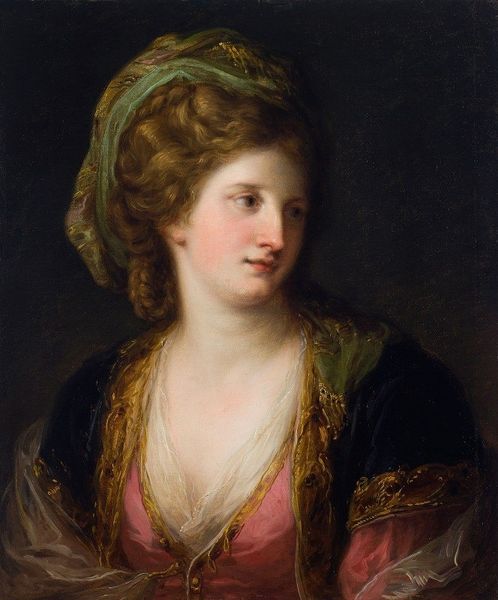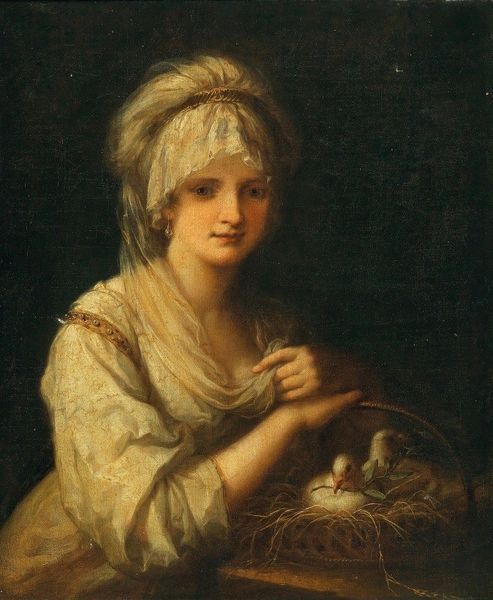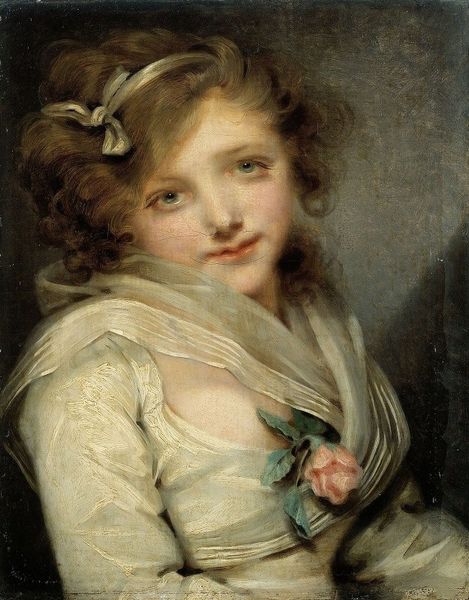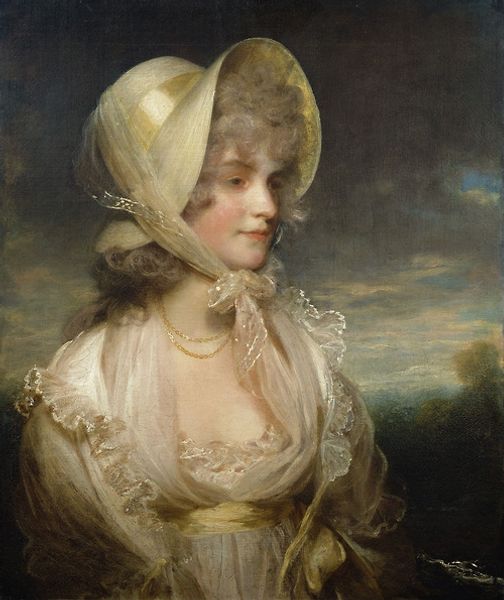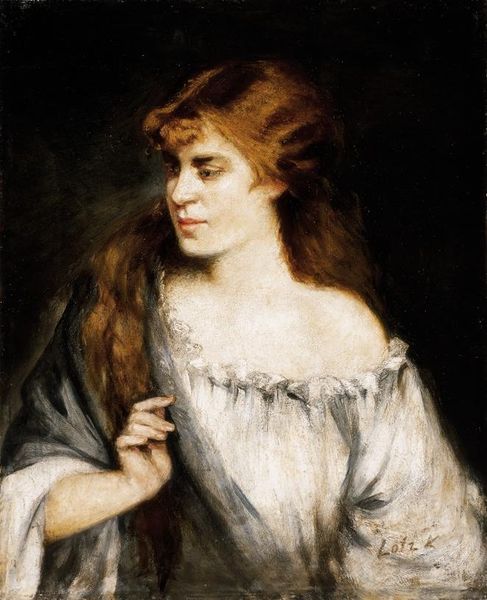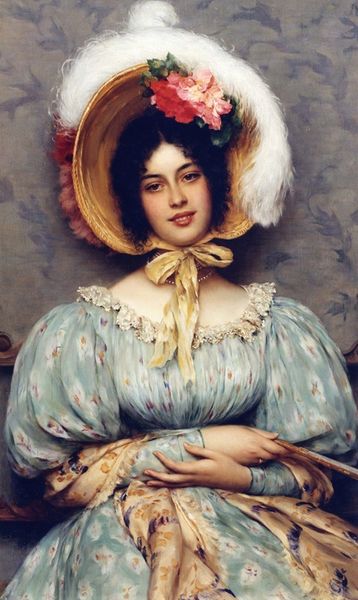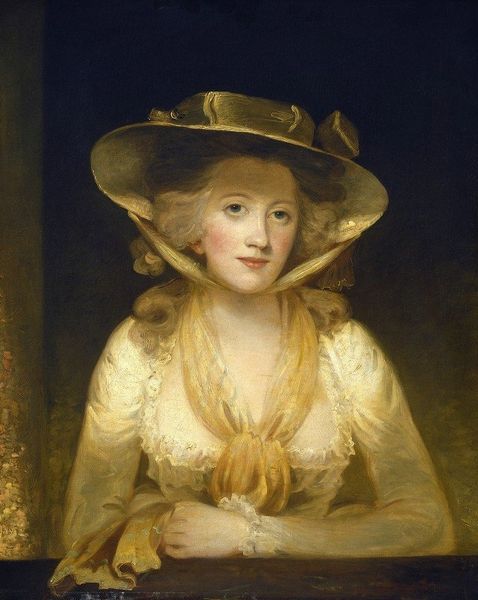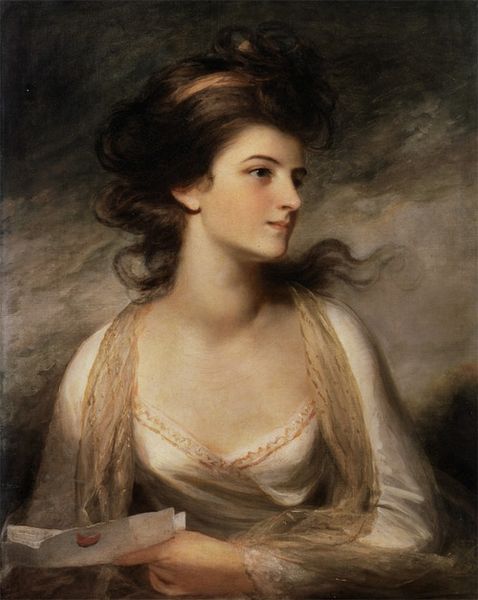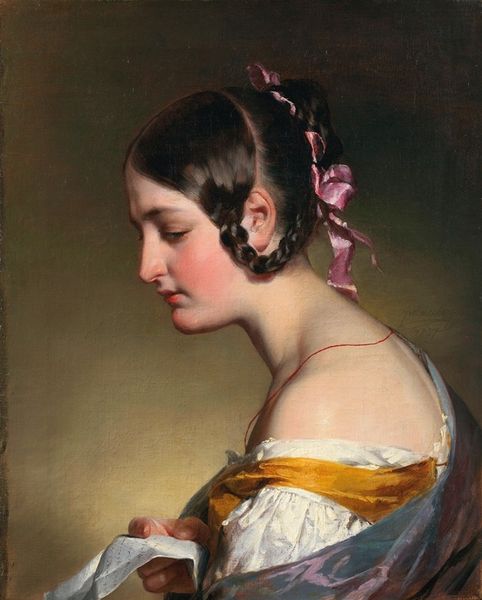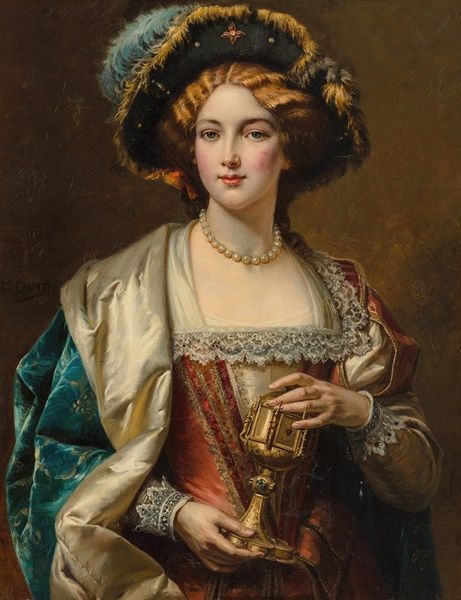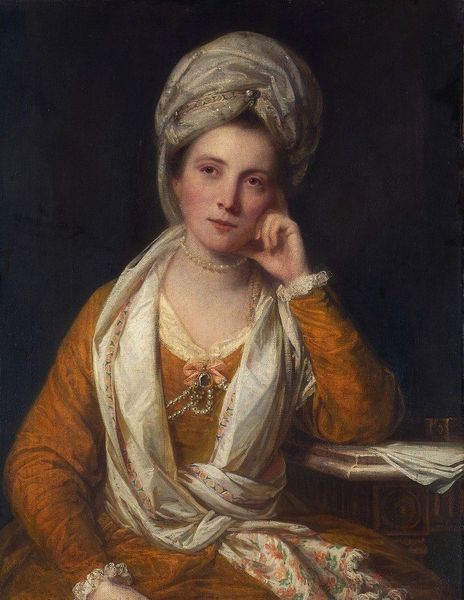
painting, oil-paint
#
portrait
#
figurative
#
neoclacissism
#
allegory
#
painting
#
oil-paint
#
classical-realism
#
figuration
#
history-painting
Copyright: Public Domain: Artvee
Curator: Angelica Kauffmann is the artist behind this work. It's titled *Portrait Of A Lady As A Vestal Virgin*, rendered with oil paint. The way light interacts with the sheer fabrics is quite captivating; the artist really explores the visual texture of drapery. Art Historian: It’s a compelling piece, definitely. There’s a certain somberness to it, wouldn't you agree? Her gaze is averted, almost melancholy. The title is an interesting window, given the loaded significance of vestal virgins within the social history of ancient Rome. Curator: Agreed, the fabrics convey that softness, contrasting with the somber subject. Look at the layered brushstrokes building up that translucence! This wasn't just about representation, but about showcasing the material potential of oil paint. Think about Kauffman's access to high-quality pigments and binding agents; the materials played as crucial a role as the skill itself. Art Historian: Exactly. Placing it within its historical context, these idealized portraits were highly marketable. Representing women as classical figures subtly legitimized their virtue and status in society. The market for these paintings definitely reflects how women were publicly perceived, right? Also, a painting titled with an ancient greek figure, made by a woman artist! How it was received? Curator: Precisely. The demand informed production. And beyond mere societal expectations, Kauffman actively engaged with the classical through her material choices, her painterly touch. Do you think that it was perceived by audiences how Kauffman took this ancient greek motive for empowering female? Art Historian: It is all very complicated; paintings like these contributed to shaping broader societal views on virtue, gender and class... The galleries, salons, and private collections that displayed the portrait actively curated and solidified its meaning within public life. We should keep in mind that back then, not everyone had equal access to art... Curator: Indeed. These spaces served to consecrate it. To your point, it's about thinking through who commissioned this and how their wealth impacted this kind of cultural output and female painters like Angelica Kauffmann. I think it opens up interesting routes into looking at how female agency may manifest within restrictions. Art Historian: I find that a particularly insightful lens for appreciating both the artwork and Angelica Kauffman herself. The impact and visibility of female artists depended and depends on external factors too!
Comments
No comments
Be the first to comment and join the conversation on the ultimate creative platform.
